#Russell Janzen
Text
Russell Janzen on Retiring
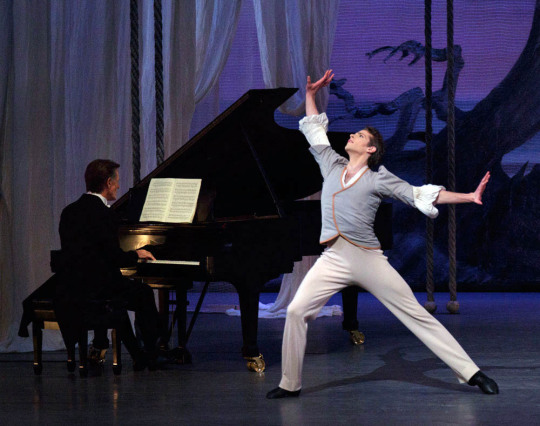
Russell Janzen in Balanchine's Davidsbundlertänze, 2014. Photo: Paul Kolnik via DanceTabs
Russell Janzen gave his last performance with the New York City Ballet last Sunday, partnering Sara Mearns in the Diamonds section of Jewels. He published his thoughts on retiring in The New York Times.
On Leaving the Life of the Body: A Dancer Reports
“I know that I am about to give up one of my primary ways of being me,” Russell Janzen writes about retiring from New York City Ballet after 16 years.
By Russell Janzen
It is one of my last ballet classes as a professional dancer. Halfway through barre we do rond de jambes—an exercise in which you paint half circles on the floor with your toes. The teacher, Gonzalo Garcia, sets a combination that sweeps back and forth as we transfer our weight from one foot to the next, our arms swinging to amplify our movements.
Extending through to the tips of my fingers and reaching my legs long I feel expansive. It’s not exactly that I feel free—I am doing a prescribed exercise, holding onto a wooden bar—but the stretch of my body and the rumbling swells of the music create a sense of rightness and liberation. I feel present and energized, my body alive. The pleasure of this moment is a relief; it’s a sensation I am forever pursuing, because at the best of times dancing can make me feel whole and wholly myself. On Sunday, I will retire from New York City Ballet after 16 years with the company. I have spent over a year preparing myself, and I am ready. But I know that I am about to give up one of my primary ways of being me.
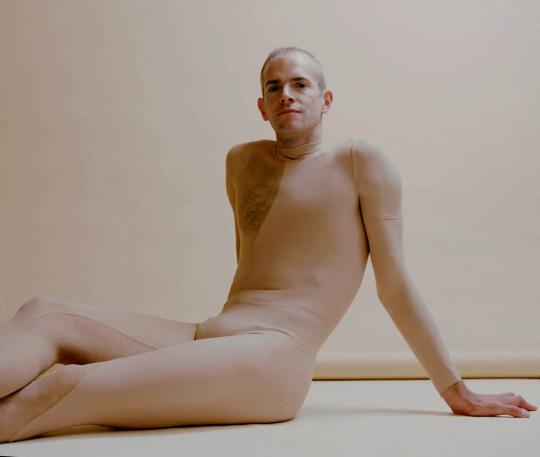
“As dancers, we become our bodies, in ways both gratifying and reductive.” Photo: Jingyu Lin for The New York Times
My specific physical capabilities—the particular functioning of my muscles, joints, bones and tendons—have been essential to my livelihood. And to my happiness, too, because in moments of alignment and control my body is not just the vessel for my self-expression, it is the expression itself.
So I wonder: Who will I be when my body is no longer shaped by turning out and jumping and lifting? What will I like to do when I don’t have to save my back or my calves or my feet for the next night, the next week, the next month? And how will I feel after these final shows: Like I’m getting my body back, or like I’m losing it?
In spring 2019, I danced the central duet in Justin Peck’s “Rodeo" for the first time. The debut came at one of these sweet spots in my career: I was dancing the way I had always wanted to dance. I wasn’t doing everything perfectly, I still had nerves—and I can’t speak to how I looked—but I felt in control in a way I never had before. I just felt good in my body. Settled.
In the first performance, my partner Sara Mearns and I walked out onstage, and when the music started it was slower than we had rehearsed. Much slower. Sara gave me a look like, “Oh, boy.” That look was both an eye roll aimed at the conductor and an invitation to meet the challenge he had set for us. I smiled at Sara as if we weren’t in front of thousands of people and pushed her into the air, higher than we’d practiced—and then I launched myself after her and we danced.
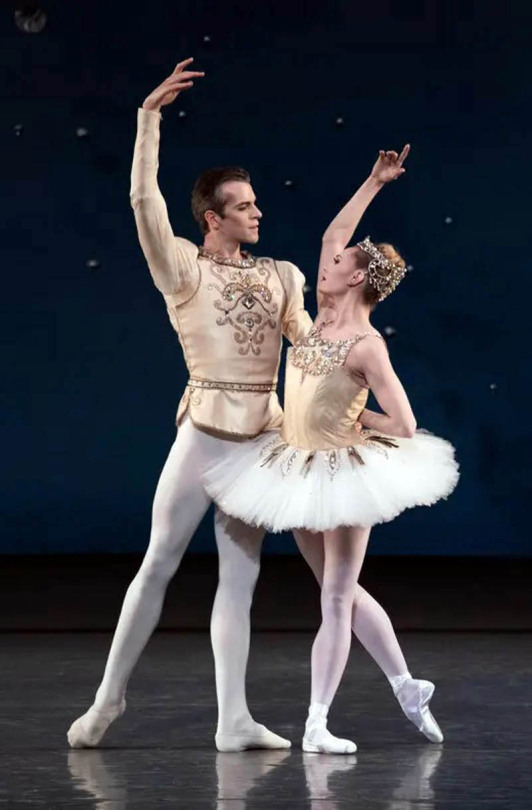
Russell Janzen with Sara Mearns in Diamonds. Photo: Erin Baiano via the NY Times
But it didn’t feel like dancing. It felt like living, in a heightened, intoxicating way. It felt like we were the music, and the dance. We were ourselves in the most essential and simple way but also we were something more, something bigger. We were dancing. And I don’t mean that as a verb; I mean it as a noun. We were all that dancing could be in that moment, to that music, on that stage.
Of course we were also wearing lots of makeup and we were sweating and trying to point our feet and stand tall, and I was trying to keep her on balance and she was trying to hold up her leg. But we were not thinking about this trying, we were just being, and it felt so right.
Throughout my career there have been many moments like this, when how I feel in my body makes my dancing seem inseparable from myself. Sometimes these moments are brief, lasting just one entrance or one class, other times I can hold onto the feeling for weeks.
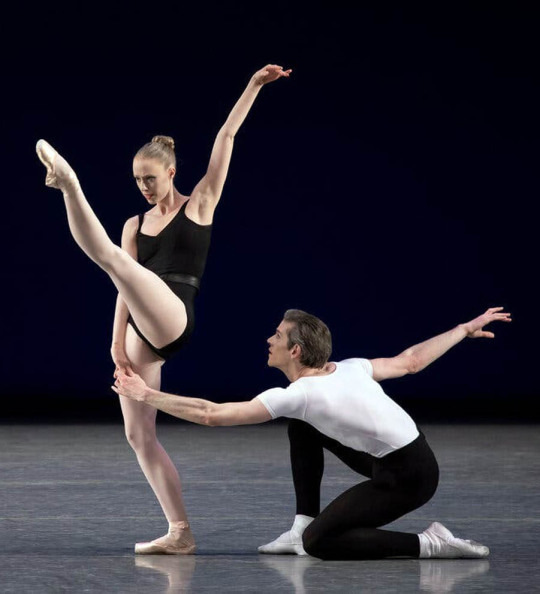
Janzen partnering Teresa Reichlen in Balanchine’s Agon in 2019. Photo: Erin Baiano via the NY Times
As dancers, we become our bodies, in ways both gratifying and reductive. We always deal with pain and tightness — navigating physical limitations is a part of this art form — but when muscles cooperate, and choreography feels natural, even grappling with the body’s capabilities offers rewards.
This intense relationship with my physicality has been fulfilling, a gift. And yet being tied to my body in this way has also been restrictive and often disappointing.
I spent my first six years with the company cycling through career-pausing injuries, never staying healthy long enough to gain much momentum. At a certain point my body became more manageable and I gained traction in my career — dancing bigger roles, being promoted to soloist, then principal.
But the injuries continued: a tear in my shoulder, a sticky rib, a trouble spot in my spine that persists, ankle sprains, back spasms. Ballet is punishing on most every body, but at 6-foot-3 I am not compact. My height and length can look impressive onstage, but my body doesn’t always absorb the impact of dancing and partnering well, making me — and my spine especially — susceptible to injury and strain.
It’s thanks to a fleet of physical therapists and movement specialists that I danced as much as I did. I spent hours each day doing exercises, taking preventive measures to protect my back and prepare my body for what I had to do each night. In order for me to dance, my body — its needs, aches and peculiarities — dictated everything: how long I sat, how I slept, how I traveled, how I dated, how I spent time with my family, how I relaxed, how I lived.
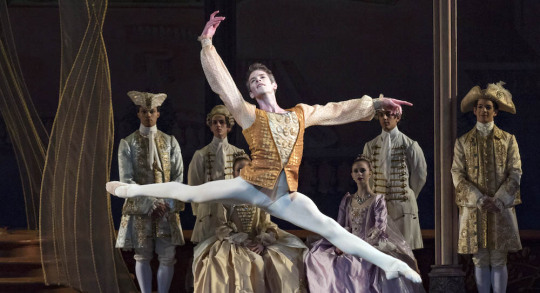
Janzen in Peter Martins's staging of The Sleeping Beauty, Act II, 2017. Photo: Paul Kolnik via Dance Informa
Relying on my body in the way I’ve needed to has meant sacrifices and pain. Sacrifices and pain that were frustrating but worth it because of onstage experiences like “Rodeo,” because I got to dance ballets I always dreamed of dancing: Jerome Robbins’s “Dances at a Gathering”; George Balanchine’s “Agon,” “Swan Lake,” “Diamonds.” And because of the dancers with whom I shared the stage.
Since late fall of 2019 I have had two new injuries — one in my ankle and one in my knee — that again kept me from ballet. Now that my dancing body has been going for decades, the recoveries have been challenging. I’m 34; healing takes longer than when I was 19, and when I am deemed ready to go back onstage my body doesn’t feel like it did before. I’m told it likely won’t again.
Martha Graham famously said that a dancer dies twice, the first time when they stop dancing — when the body can no longer do what it once did. It’s this first death, she said, that is more difficult. And this is where I am now. No longer able to do what I once did.

Janzen and Ashley Bouder filming Balanchine’s “Duo Concertant” for Sofia Coppola in 2021. Photo: Erin Baiano via the NY Times
With the latest injury, a patellar tear, I chose to dance until it proved too painful and so had months to prepare myself for the time off. I made plans, I gave myself projects, I had a loving support system. And yet while I was healing there was a part of me that felt like I was waiting for my life to restart. So much of my life as a dancer has been spent waiting to live, biding time or saving myself for when I am out onstage again dancing. Waiting for my body to once again be able to do what I need it to do to feel like me.
I have had enough rewarding shows in the last year to know that I could continue dancing—shift how I approach the work and find new meaning in a more limited repertoire. But I’m ready to stop. I am ready to pay attention to something new, to reorient my relationship to myself and to those around me. My body, my dancing body, has been the part of me I have prioritized above all else for over 16 years—the part to which I have given the most attention and care. And I don’t want to pay attention to my body in this way anymore, with my physicality and ever-increasing limitations dictating how I live both onstage and off.
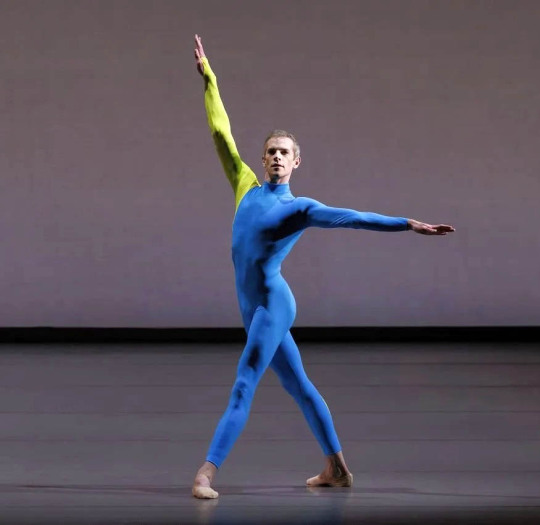
Janzen in Pam Tanowitz's Law of Mosaics. Photo: Erin Baiano via Gramilano
There is much loss in this first death. I will not diminish the grief and sadness of this time, but as I’m nearing the final moments of my dance career I’m also thinking about how this ending means I get to have another life, one with different kinds of freedom.
After finishing dancing I plan to pursue a degree in social work. I don’t have much of a sense of what this will look like or where it will lead me, but I know that it will offer me an entirely different framework through which I might understand and experience the world. Rather than narrowing in again on something specific, my hope is that this will be a time of exploration, an opening up of possibilities.
As I am writing this, I have three remaining performances including my retirement show. I’ll be dancing “Diamonds” in Balanchine’s “Jewels,” a ballet that has taken me through my entire career. It was my first ballet with the company (aside from “The Nutcracker”). And in 2014 the principal role, which I’ll be retiring with, was one of my first really major parts.
“Diamonds” ends in an epic display of grandiosity and classicism. Thirty-six dancers move in shifting patterns—turning, jumping, and polonaising around the stage. In one of the last moments the entire cast moves in unison. All the dancers unfurl a leg into an extended line in front of them, foot pointed and rotated, displayed for the audience: Look at our feet and our legs, look at these bodies of ours. Watch us dance and see how this life, our dedication, and our passion has shaped us.
On Sunday, while my back might be tight, and my knee might not bend as pliantly as it once did, my body won’t be failing me. This is my body now, after 16 years dancing the greatest ballets. In these last shows I will get to support a treasured partner, dance with people I’ve known for much of my life, and propel myself into the air and around the stage. I will get to be in my body, in whatever state it is in, in a way that I love, using it to take me through the contours and shapes of one of my favorite dances. Then the curtain will come down, and I will move on to something new.

Sara Mearns and Janzen in Balanchine's Chaconne, 2014. Photo: Paul Kolnik via Pinterest
#Russell Janzen#retirement#dancer retires#dancer retirement#New York City Ballet#NYCB#Russell Janzen retires#Russell Janzen writer#ballet#ballet retirement#identity#Balanchine
7 notes
·
View notes
Text


Unity Phelan and Russel Janzen in Serenade (New York City Ballet 2023)
154 notes
·
View notes
Text
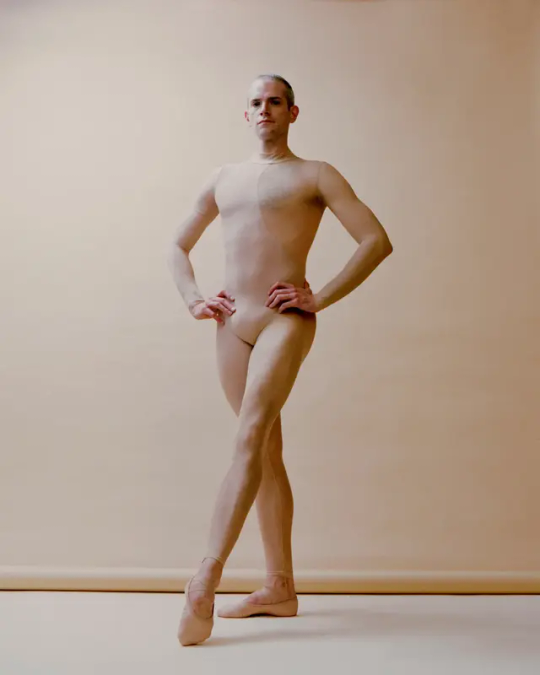
As I am writing this, I have three remaining performances including my retirement show. I’ll be dancing “Diamonds” in Balanchine’s “Jewels,” a ballet that has taken me through my entire career. It was my first ballet with the company (aside from “The Nutcracker”). And in 2014 the principal role, which I’ll be retiring with, was one of my first really major parts.
“Diamonds” ends in an epic display of grandiosity and classicism. Thirty-six dancers move in shifting patterns — turning, jumping, and polonaising around the stage. In one of the last moments the entire cast moves in unison. All the dancers unfurl a leg into an extended line in front of them, foot pointed and rotated, displayed for the audience: Look at our feet and our legs, look at these bodies of ours. Watch us dance and see how this life, our dedication, and our passion has shaped us.
On Sunday, while my back might be tight, and my knee might not bend as pliantly as it once did, my body won’t be failing me. This is my body now, after 16 years dancing the greatest ballets. In these last shows I will get to support a treasured partner, dance with people I’ve known for much of my life, and propel myself into the air and around the stage. I will get to be in my body, in whatever state it is in, in a way that I love, using it to take me through the contours and shapes of one of my favorite dances. Then the curtain will come down, and I will move on to something new.
[On Leaving the Life of the Body: A Dancer Reports]
“I know that I am about to give up one of my primary ways of being me,” Russell Janzen writes about retiring from New York City Ballet after 16 years.
10 notes
·
View notes
Text
"Nel blu dipinto di blu (Volare)" - Domenico Mudugno
1958
Music: Domenico Mudugno; lyric: Domenico Mudugno and Franco Migliacci
The Eurovision Song Contest has produced many hits. None are as recognisable as this one. It's number 11 in Let's Do It, my personal fifty favourite singles from 1954-76.
Volare! (Fly!)
Oh-oh! (Oh-oh!)
Cantare! (Sing!)
Oh-o-oh-oh! (Oh-o-oh-oh!)
Domenico Modugno co-wrote "Volare" after having a weird dream, and then he turned his song about that weird dream into this massive smash. It's a hulking great piece of ham, this cheese dream song, as subtle as being hit over the head with a brick.
A proper piece of light opera, Domenico performs "Volare" with great vocal capacity. And he remembers that it is just a silly little song, performed with a little chuckle in his voice.

In short, it's exactly what any contest of popular song should reward. No wonder that it won the San Remo festival in 1958, and swept to an overwhelming third place at that year's Eurovision festival.
Popular taste has always been a strange and inexplicable thing, "Volare" was later covered (in English translation) by Dean Martin; he has the vocal brilliance, but doesn't quite have the playfulness Domenico brings to the song.
It was the most successful of a squillion covers, ranging from the sublime (David Bowie on the Absolute Beginners soundtrack), to the flamenco (Gypsy Kings), to the unspeakable (Aled Jones and Russell Watson).
And if you can't sing well, there's always a call-and-response section. "Volare" is the one Eurovision song that a desperate producer can expect a crowd to know and love. Chantel Janzen led the crowd in a singalong when technical problems delayed a rehearsal in 2021; producers in Istanbul used "Volare" to fill a gap when an item proved unbroadcastable in the 2004 final. These days, they might use "Snap".
youtube
#domenico modugno#volare#nel blu ni pinto di blu#eurovision#eurovison song contest#san remo#1958#light opera#call and response#singalong#let5d0it#let's do it#pop music#20th century#1954-1976
4 notes
·
View notes
Photo
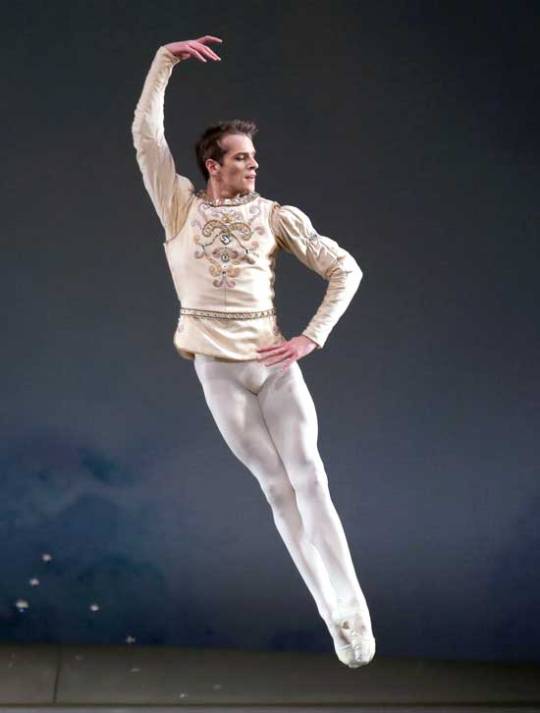
Russell Janzen - NYC Ballet - photo by Paul Kolnik
#russell janzen#nyc ballet#new york city ballet#paul kolnik#dance#ballet#dancer#danseur#bailarín#tänzer#boys of ballet#ballet men
41 notes
·
View notes
Photo
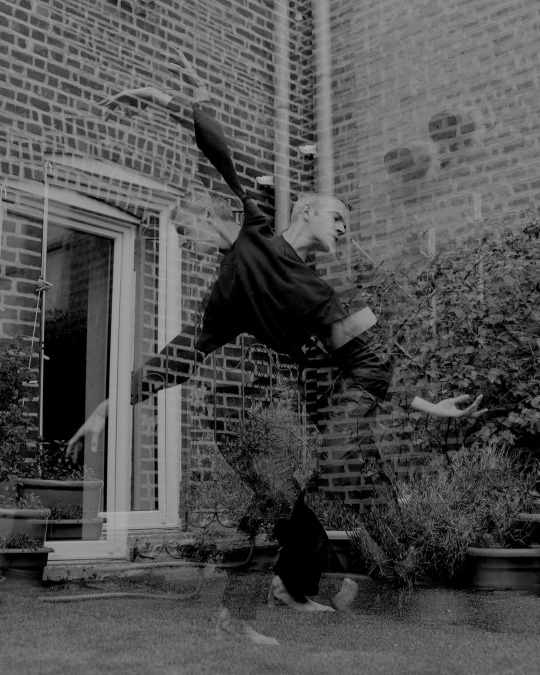
Russell Janzen | New York City Ballet | Jingyu Lin | The New York Times
21 notes
·
View notes
Photo

Rebecca Krohn and Russell Janzen in “Liebeslieder Walzer”, NYCB
#dance#ballet#neoclassical ballet#nycb#new york city ballet#liebeslieder walzer#george balanchine#brahms#rebecca krohn#russell janzen
39 notes
·
View notes
Photo
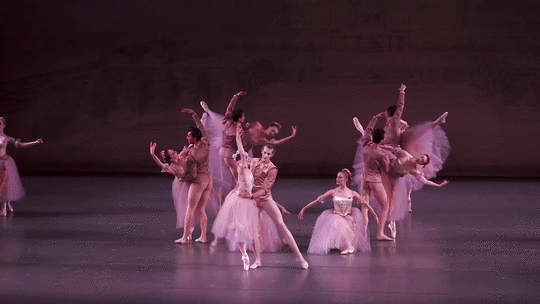
Ashley Bouder, Russell Janzen, and NYCB corps in Brahms-Schoenberg Quartet
#ashley bouder#russell janzen#brahm-schoenberg quartet#new york city ballet#prima ballerina#ballet#molly gif#nycb gif#my gif#gif#ballerina#dance#ballet gif
7 notes
·
View notes
Photo

Maria Kowroski and Russell Janzen in Concerto Barocco (NYCB)
33 notes
·
View notes
Photo
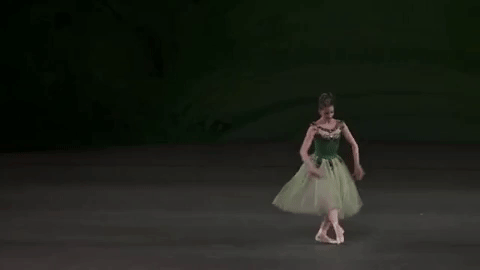
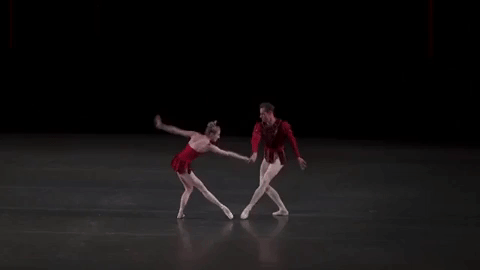

Jewels
Emeralds, Rubies, Diamonds
#new york city ballet#nycb#jewels#emeralds#rubies#diamonds#Teresa Reichlen#Russell Janzen#teresa reichlen and Russell Janzen#sterling hyltin#Andrew Veyette#sterling hyltin and andrew veyette#Abi Stafford#George Balanchine#Balanchine#dance#pas de deux#romance#jazz#tchaikovsky#ballet#ballerina#pdd#gifs#my gifs
209 notes
·
View notes
Text
Sara Mearns on “Diamonds”
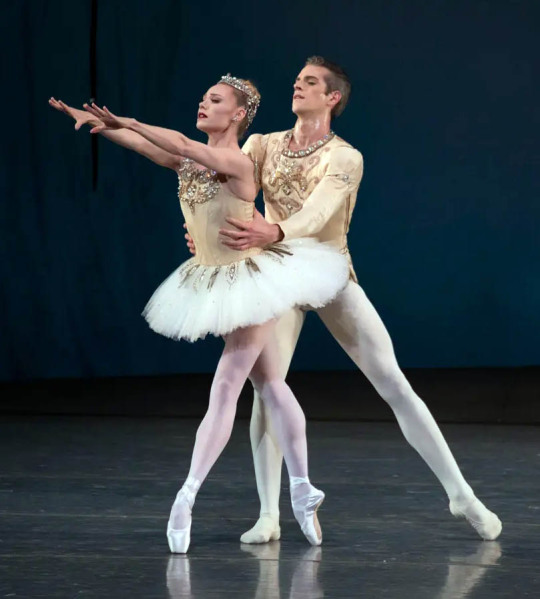
I had grown up watching Kyra Nichols and Wendy Whelan dancing “Diamonds,” and it was my absolute dream to dance it, too. I immediately connected to “Diamonds.” It’s big, dramatic movement, nothing small, and I don’t think there’s anything small about my dancing. I have to reach deep down in my soul to do this ballet, to rise to the level of the choreography, the costumes…”Diamonds” is just on another level from anything else I’ve done. It takes everything out of you, if you’re willing to put that much into it.
When I first started dancing this ballet, I was so over-the-top and full-out. Now I’ve learned that I can find moments to calm down and just be me, and that’s enough. I don’t have to comment on top of the choreography. I can just let the audience take it in. I’ve danced it with five different partners now and always find something new to do, because it’s a long, epic journey with each one. There’s no story, but there are definitely moments of tension. There are elements in the pas de deux called “Swan Lake,” and others we call “cavalier and queen,” so it’s not just dancing to pretty music. There’s got to be something going on in your brain.
One of the hardest parts is the polonaise at the end. No matter how much I rehearse or perform it, I get to that last section and think, “I don’t know if I can do this. I don’t know if I can get on relevé for that last pirouette!” One time it did happen—I didn’t get up onto relevé. But it happens to everybody.
I always get emotional at the end. Everyone is onstage together, dancing to this glorious music. It’s the culmination of everything Jewels is about. It was Balanchine’s genius to use the music to celebrate dancers and make them look their best, and that’s what I feel “Diamonds” does for me.
—from Pointe magazine, July 21, 2017
Photo: Sara Mearns and Russell Janzen in the Diamonds section of Jewels. Erin Baiano for the NY Times
#Balanchine#George Balanchine#Jewels ballet#ballet#Diamonds ballet#Sara Mearns#Russell Janzen#ballerinas#NYCB#New York City Ballet
24 notes
·
View notes
Link

By BY RUSSELL JANZEN from Arts in the New York Times-https://www.nytimes.com/2021/05/05/arts/dance/russell-janzen-duo-concertant.html?partner=IFTTT
Russell Janzen of City Ballet misses the physical and emotional closeness forged onstage, which are lost on Zoom and in socially distanced dancing.
Only Connect: Yearning for the Intimacy of a Danced, Onstage World New York Times
0 notes
Text
New York City Ballet | NYCB Digital Season | Inside NYCB: Stravinsky Violin Concerto
Hosted by Principal Dancer Russell Janzen, Inside NYCB: Stravinsky Violin Concerto features a coaching session between Repertory Director Rebecca Krohn and Soloist Claire Kretzschmar in the ballet's first aria.
The coaching session is immediately preceded by an intimate conversation on performing this role with Rebecca Krohn, Claire Kretzschmar and Principal Dancer Sara Mearns, moderated by Russell Janzen.
STRAVINSKY VIOLIN CONCERTO Music ... Igor Stravinsky Choreography ... George Balanchine
5 notes
·
View notes
Text
Sara Mearns of New York City Ballet in “Spring” from Jerome Robbins’ The Four Seasons, photo by Paul Kolnik
The fourth week of programming of New York City Ballet’s six-week digital spring season has been announced.
On Tuesday 12 May at 8 pm EDT, NYCB will release a programme of Jerome Robbins’ Afternoon of a Faun and “Spring” from The Four Seasons, and excerpts from George Balanchine’s Divertimento No. 15, The Four Temperaments, and Western Symphony.
On Friday 15 May the company will make available Justin Peck’s Pulcinella Variations.
Each program will be available for 72 hours after it premieres on NYCB’s website, Facebook, and YouTube pages.
NYCB’s digital season also includes “Ballet Essentials” classes for all ages on Mondays and Thursdays at 6 pm EDT; “Wednesday with Wendy,” ballet-inspired movement classes held on Instagram Live on Wednesdays at 5 pm EDT; “Ballet Breaks,” 20-minute workshops for children ages 3-8 held on Saturdays and Sundays at 11 am EDT; and new episodes of City Ballet The Podcast on Mondays. All offerings are available free of charge on several platforms, and more details can be found in the attached overview and at www.nycballet.com/digitalspring.
Sterling Hyltin and Joseph Gordon of New York City Ballet in Jerome Robbins’ Afternoon of a Faun photo by Erin Baiano
WEEK 4: Monday, May 11 – Sunday, May 17
Monday 11 May
City Ballet The Podcast
“Hear the Dance” episode on Jerome Robbins’ Afternoon of a Faun, featuring former NYCB Principal Dancer and SAB Chairman of Faculty Kay Mazzo and former NYCB dancer Afshin Mofid, hosted by
NYCB dancer Silas Farley (available at podcast.nycballet.com, Apple Podcasts, Spotify, Stitcher, Luminary, the iHeartRadio app,
and other podcast platforms)
Ballet Essentials – Russian Seasons
45-minute interactive movement workshop suitable for people of all ages and level of training consisting of a ballet warm-up and a movement combination inspired by Alexei Ratmansky’s Russian
Seasons, taught by NYCB Soloist Unity Phelan (register at balletessentials.nycballet.com; workshop at 6 pm EDT)
Tuesday 12 May: NYCB Performance
New York City Ballet in Balanchine’s Divertimento No. 15, photo by Paul Kolnik
Sterling Hyltin of New York City Ballet in Jerome Robbins’ Afternoon of a Faun photo by Paul Kolnik
Ask la Cour of New York City Ballet in “Phlegmatic” from Balanchine’s The Four Temperaments photo by Erin Baiano
Roman Mejia of New York City Ballet in “Rondo” from Balanchine’s Western Symphony photo by Erin Baiano
“Spring” from The Four Seasons
Music by Giuseppi Verdi
Choreography by Jerome Robbins
PRINCIPAL CASTING: Sara Mearns and Tyler Angle
with the NYCB Orchestra, Conductor: Andrew Litton, NYCB Music Director
Filmed on May 3, 2018, David H. Koch Theater, Lincoln Center
“Theme and Variations” from Divertimento No. 15
Music by Wolfgang Amadeus Mozart
Choreography by George Balanchine
PRINCIPAL CASTING: Lauren King, Sterling Hyltin, Ana Sophia Scheller, Abi Stafford, *Tiler Peck,
Andrew Veyette, Daniel Applebaum, and *Andrew Scordato (*first time in a role)
with the NYCB Orchestra, Conductor: Andrew Litton, NYCB Music Director
Filmed on September 22, 2016, David H. Koch Theater, Lincoln Center
Afternoon of a Faun
Music by Claude Debussy
Choreography by Jerome Robbins
PRINCIPAL CASTING: Sterling Hyltin and *Joseph Gordon (*first time in a role)
with the NYCB Orchestra, Conductor: Andrew Litton, NYCB Music Director
Filmed on October 11, 2018, David H. Koch Theater, Lincoln Center
“Third Variation: Phlegmatic” from The Four Temperaments
Music by Paul Hindemith
Choreography by George Balanchine
PRINCIPAL CASTING: Ask la Cour
with the NYCB Orchestra,
Conductor: Andrew Litton, NYCB Music Director; Solo piano: Stephen Gosling
Filmed on January 18, 2017, David H. Koch Theater, Lincoln Center
“Rondo” from Western Symphony
Music by Hershy Kay
Choreography by George Balanchine
PRINCIPAL CASTING: Teresa Reichlen and *Roman Mejia, with Lauren King, Taylor Stanley,
Megan Fairchild, and Jared Angle (*first time in a role)
with the NYCB Orchestra, Conductor: Andrew Litton, NYCB Music Director
Filmed on May 9, 2019, David H. Koch Theater, Lincoln Center
Introduction by Sterling Hyltin, NYCB Principal Dancer
(available at nycballet.com, facebook.com/nycballet, and youtube.com/nycballet from Tuesday 12 May 12 at
8 pm until Friday 15 May at 8 pm EDT)
Wednesday 13 May
Wednesday with Wendy
Live ballet-inspired movement class suitable for people of all ages and levels of training, taught by NYCB Associate Artistic Director Wendy Whelan
(available on Instagram Live at 5 pm EDT and IGTV at instagram.com/nycballet)
Thursday 14 May
Ballet Essentials – The Four Temperaments
45-minute interactive movement workshop suitable for young adults and adults consisting of a
ballet warm-up and a movement combination inspired by George Balanchine’s The Four
Temperaments, taught by NYCB Principal Dancer Adrian Danchig-Waring
(register at balletessentials.nycballet.com; workshop at 6 pm EDT)
Friday 15 May: NYCB Performance
Emilie Gerrity of New York City Ballet in Justin Peck’s Pulcinella Variations, photo by Paul Kolnik
Indiana Woodward of New York City Ballet in Justin Peck’s Pulcinella Variations, photo by Paul Kolnik
Pulcinella Variations
Music by Igor Stravinsky
Choreography by Justin Peck
PRINCIPAL CASTING: Sterling Hyltin, Miriam Miller, Tiler Peck, Emilie Gerrity, Indiana Woodward,
Russell Janzen, Andrew Scordato, Gonzalo Garcia, Anthony Huxley
with the NYCB Orchestra, Conductor: Andrews Sill, NYCB Associate Music Director
Filmed on October 5, 2018, David H. Koch Theater, Lincoln Center
Introduction by Justin Peck, NYCB Resident Choreographer and Artistic Advisor
(available at nycballet.com, facebook.com/nycballet, and youtube.com/nycballet from Friday 15 May at
8 pm until Monday 18 May, at 8 pm EDT)
Saturday 16 May 16
Ballet Breaks – A Midsummer Night’s Dream
20-minute interactive movement workshop for children ages 3-8, consisting of a warm-up and choreography inspired by George Balanchine’s A Midsummer Night’s Dream, taught by NYCB
dancer Ashley Hod
(register at nycballet.com/balletbreaks; workshop at 11 am EDT)
Sunday 17 May
Ballet Breaks – A Midsummer Night’s Dream
20-minute interactive movement workshop for children ages 3-8, consisting of a warm-up and choreography inspired by George Balanchine’s A Midsummer Night’s Dream, taught by NYCB
dancer Ashley Hod
(register at nycballet.com/balletbreaks; workshop at 11 am EDT)
Programming subject to change (05/04/20)
Week 4 of New York City Ballet’s six-week digital spring season The fourth week of programming of New York City Ballet’s six-week digital spring season has been announced.
1 note
·
View note
Photo

Russell Janzen - photo by Andrea Mohin for The New York Times
#russell janzen#andrea mohin#the new york times#tänzer#dancer#bailarín#danseur#ballerino#boys of ballet#ballet men
16 notes
·
View notes
Photo
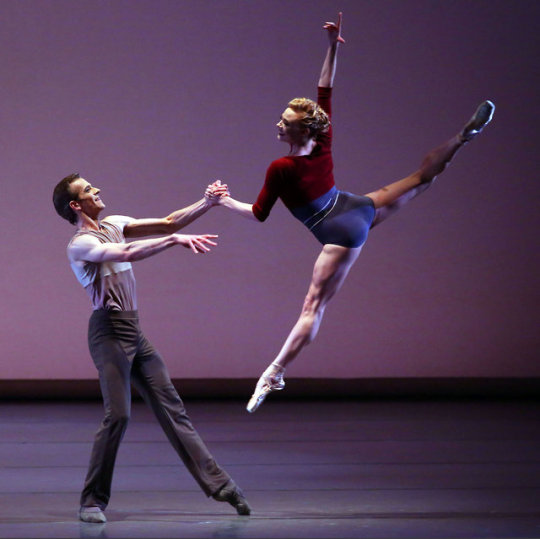


Sara Mearns, Russell Janzen, and ensemble in Justin Peck’s Rodeo: Four Dance Episodes (NYCB, 2019)
Photos by Andrea Mohin and Paul Kolnik
1 note
·
View note